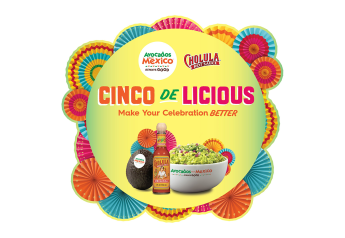Trends still pointing up for organics

Interesting in attending 2021 Global Organic Produce Expo Golf? This is not your everyday conventional expo, we are redefining the status quo. Want to see if you qualify for this exclusive networking and golf expo August 5-6? Fill out this quick form and we will reach out if you qualify to attend.
The trend arrow is still pointing way up for organic produce, speakers from the U.S. Department of Agriculture and the Organic Trade Association said at The Packer’s 2021 Global Organic Produce Expo.
Lance Honig, crops branch chief of the USDA’s National Agricultural Statistics Service, was joined by Angela Jagiello, director of education and insights for the Organic Trade Association at the Jan. 26 session, which was moderated by Tom Karst, editor of The Packer.
Honig reviewed fruit and vegetable-related highlights from the USDA’s 2019 Organic Survey.
The number of organic farms in the U.S. in 2019 totaled 16,585 farms, up 16.7% from 2016 and up 31.3% from 2014, Honig said. The total organic cropland in 2019 totaled 3.52 million acres, up 26.6% in 2016 and a whopping 73.5% higher than 2014. This includes livestock, row crops, and other non-specialty crops.
California has the most organic production, boasting 3,012 farms and 438,400 acres of organic cropland. California’s number of farms was up 11% from 2016 while the state’s organic cropland rose 30.3% compared with 2016.
Top states for organic crop sales in 2019 were California, Washington, Pennsylvania, Oregon and Texas, according to the USDA survey. Crops account for 58% of total organic agricultural sales, followed by 17% for livestock and poultry and 25% for livestock and poultry products.
The top five organic crops in the 2019 survey, Honig said, are:
- Apples: $475 million;
- Lettuce: $400 million;
- Grapes: $332 million; and
- Strawberries: $321 million.
Numerous organic fruit and vegetable crops are seeing production increases, Honig said.
“I think what we see very clearly here is that for all of those crops — apples, lettuce, grape strawberries, blueberries, and spinach — the trend is definitely increasing across time,” he said, noting sharp increases since 2016.
Looking for trends
Jagiello reviewed numbers from the organic association’s 2020 Organic Industry Survey, which estimated total organic food sales at $50 billion and total organic produce sales at $18 billion. OTA estimates that about 14% of all produce sold is organic, she said.
In 2019, organic produce sales growth was 4%-5%, but Jagiello said organic sales spiked after the COVID-19 pandemic began, running 14%-19% above year-ago levels for most of 2020 and ending the year with about 11% growth year-over-year.
“With restaurants closed, with school cafeterias and other foodservice venues out of the picture, a lot of people who are inclined to purchase organic purchased more and they did it all year long as home cooking became a big force in the market,” Jagiello said.
She said retail disruptions in 2020 led to an interest in local food systems, more online shopping/omnichannel, home cooking and changing packaging preferences.
She said the question is how “sticky” COVID-19 consumer behavior will be after the country emerges from the pandemic.
Jagiello said that shoppers became interested in local solutions for their food early in the pandemic,
“I think a lot of innovation happened in local channels, a lot of farmers markets, local, smaller retailers and CSAs (community-supported agriculture) became a lot more sophisticated about their online systems and setting them up,” she said. “I think a lot of people made it a new habit to try places close to their home and for many people, that behaviors really stuck.”
Jagiello referred to a Colorado State University study, in which 35% of consumers reported trying at least one new local outlet, including farmers markets, CSAs, food boxes, artisan markets and a combination of new channels.
Of those consumers (interviewed in April) about 30%-40% were still using those alternative sources in September.
“A respectable share of shoppers have changed their habits, and now they are open to new patterns,” she said.
Of course, Jagiello said the pandemic gave online grocery shopping a big boost.
Supermarket News reported in April that nearly 80% of consumers surveyed said they shopped online for groceries since the COVID-19 pandemic began in March.
Of those polled, 51% reported buying groceries from Amazon since the start of the pandemic, up 32% from before the outbreak.
“We know that particularly retail food shopping has been one of the slower areas of the U.S. economy to really uptake e-commerce and COVID-19 was just the push people needed to give it a try,” she said. Another study by Nielsen indicated that 66% of shoppers are now omnichannel shoppers, with only 32% of shoppers saying they purchase exclusively “offline.”
Jagiello said a study by Acosta reveals 55% of shoppers are eating at home more often since the pandemic. A quarter of those polled said they were “sick” of having to cook more, but 35% have found a new passion for cooking.
“One of the products that had an amazing year was packaged fresh herbs, so people are cooking at home and looking for items to make their home-cooked meals a little nicer and a little more special,” she said. More people cooking at home will continue to boost organic sales, she said.
The COVID-19 pandemic created a whiplash in packaging trends, with the trend toward less packaging and less plastics interrupted by the pandemic’s boost to packaged produce sales.
“People feel more comfortable with things that are over-wrapped, (produce items) that never came in plastic before,” Jagiello said, noting that health authorities have discounted the idea that the virus can be spread by food. The tension between the desire for the protection of plastic and concern for the environment will play out in the months ahead, she said.
Jagiello said organic consumers are generally younger than the general population, have a higher median income, are more likely to have attended college and have children in the household.
Beyond the organic certified seal, messages that appeal to organic shoppers include regenerative production methods and non-GMO messaging,
“For the most part, shoppers don’t understand the word regenerative, but they like the word regenerative,” she said. “(Consumers) want to know that organic is regenerative and a lot more, they want to know that all of the benefits are there, including that organic attempts to be lighter and more regenerative for the environment, they want to know that organic is non-GMO,”







